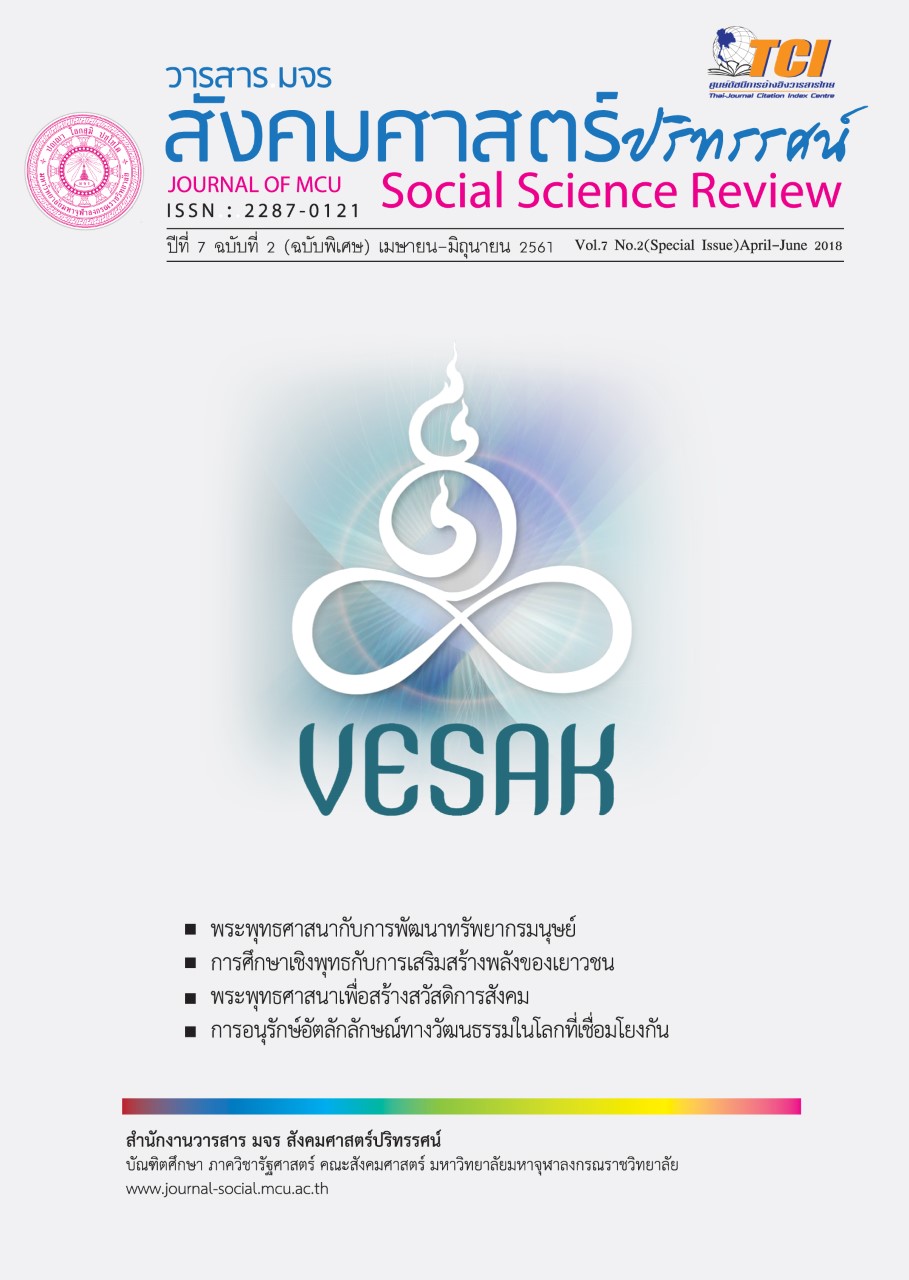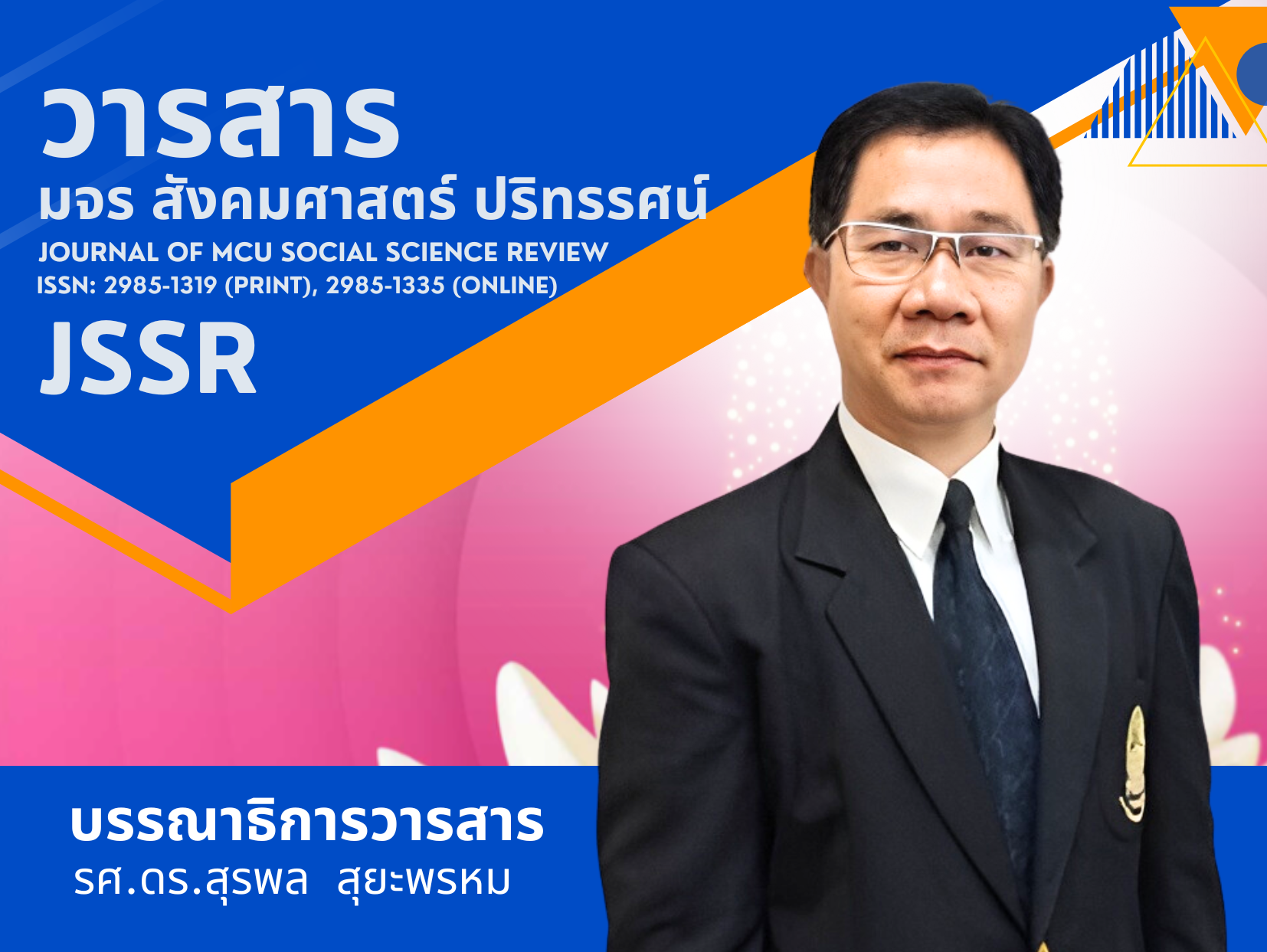ACHIEVED OUTCOMES OF THE FIVE PRECEPTS PROJECT IN LAMPAIMAT DISTRICT BURIRAM PROVINCE
คำสำคัญ:
ACHIEVED OUTCOMES, FIVE PRECEPTS PROJECTบทคัดย่อ
The objectives of this research were 1) to study the achieved outcomes of the five precepts project in Lampaimat district Buriram province 2) to study factors affecting to the achieved outcomes of the five precepts project in Lampaimat district Buriram province and 3) to propose for developing of the five precepts project in Lampaimat district Buriram province.
This research was the mixed methods research between the qualitative research and quantitative research. The populations of this research were the 8,611 people at Bangyang Sub-District, Lampaimat District, Buriram Province. The calculation of the sampling group was used by Taro Yamane formula. The sampling group was 400 people. The tool for data collection was used by the questionnaire that with reliance as 0.804 and the research findings analysis was used by the ready computer program of social sciences. The statistics used the frequency, percentage, mean, standard deviation (S.D.) to explain the general status from the person data of respondents of questionnaires and tested hypothesis for studying the factors affecting to the achieved outcomes of the Five Precepts by Multiple Regression and the qualitative research through in depth interview from 10 key informants and the data analysis was used by interview as the tool and then analyzed the data through the Content Analysis Technique.
The findings of the research were as follow:
1. The result data analysis of level agreement to achieved outcomes of the five precepts project in Lampaimat district Buriram province in overall, was the highest level with an average and deviation scale at highest level (x ̅ = 4.29, S.D.= 0.355) considered with each section found that the highest means that society section was highest level (x ̅ = 4.31, S.D. = 0.443) and community section was highest level (x ̅ = 4.30, S.D. = 0.473) and next, morality section was highest level (x ̅ = 4.28, S.D. = 0.448) last, family section was highest level (x ̅ = 4.25, S.D. = 0.448) respectively.
2. The levels of factors effects on achieved outcomes of five precepts project in Lampaimat district , Buriram province in overall , was the highest level with an average and deviation scale at (x ̅ = 4.25, S.D. = 0.389) considered with each the section showed that the planning section was highest level (x ̅ = 4.28, S.D. = 0.482) and next, acting section was highest level (x ̅ = 4.24, S.D. = 0.496), checking section was highest level (x ̅ = 4.23, S.D. = 0.429) and last doing section was highest level (x ̅ = 4.22, S.D. = 0.457).
3. The factors effecting on achieved outcomes of five precepts project in Lampaimat district, Buriram province such as acting section (X4), doing section (X2), and checking section (X3) to effect on achieved outcomes of the project with significantly statistics at the level of 0.05 by the having the effectiveness of forecast (Adjusted R2) with 0.588 and can forecast the achieved outcomes of the Five Precepts project as 58.80 percent.
4. The guidelines for development to the five precepts project in Lampaimat district , Buriram province , found that should have the plan for the best practice, should have the activity continuously for the successful project as the objectives efficiently. The leader should promote the participants have the encouragement for activity and leader should have the responsibility in the best administration and always control it.
References
Gary D. Bouma. (2010). Religious Diversity in Southeast Asia and the Pacific.
Dordrecht: Springer Netherlands.
Phra Brahmagunabhorn (P. A. Payutto). (2013). Buddhadhamma. (Bangkok:
Sahadhammika Press
Phrakhruwinaithorn Anek Tejavaro (Yai-in). (2016). The administrative project of five precepts for building joined living cultural under propel in the model communities in lower northern region. (Dissertation of Philosophy). GraduateSchool: Mahachulalongkornrajavidyalaya University.
Phramaha Krisada Kittisobhano (Saelee). (2016). Building the Reconciliation by be driven with Five Precepts Village Project in Ayutthaya Province
(Research paper). Buddhist Institute of Mahachulalongkorn-
rajavidyalaya University
Taro Yamane. (1967). Statistics; an introductory analysis. New York: Harper and Row.
Terry Martin. (2003). Coastal Planning and Management Manual. Perth: Albert Facey
House Press.
Westland. (2006). The project management life cycle. London: Designs and Patents Act.
Wilaiporn Unchaoban. (2011). The Study of the behavior of The Application of TheFive Precepts to Daily Life for the Executives and the Members of Sub-District Administration, Taphanhin District, Phichit Province (Master of Thesis). Graduate School: Mahachulalongkornrajavidyalaya
University.
Downloads
How to Cite
ฉบับ
บท
License
Copyright (c) 2020 วารสาร มจร สังคมศาสตร์ปริทรรศน์

This work is licensed under a Creative Commons Attribution-NonCommercial-NoDerivatives 4.0 International License.
เพื่อให้เป็นไปตามกฎหมายลิขสิทธิ์ ผู้นิพนธ์ทุกท่านต้องลงลายมือชื่อในแบบฟอร์มใบมอบลิขสิทธิ์บทความให้แก่วารสารฯ พร้อมกับบทความต้นฉบับที่ได้แก้ไขครั้งสุดท้าย นอกจากนี้ ผู้นิพนธ์ทุกท่านต้องยืนยันว่าบทความต้นฉบับที่ส่งมาตีพิมพ์นั้น ได้ส่งมาตีพิมพ์เฉพาะในวารสาร มจร สังคมศาสตร์ปริทรรศน์ เพียงแห่งเดียวเท่านั้น หากมีการใช้ภาพหรือตารางหรือเนื้อหาอื่นๆ ของผู้นิพนธ์อื่นที่ปรากฏในสิ่งตีพิมพ์อื่นมาแล้ว ผู้นิพนธ์ต้องขออนุญาตเจ้าของลิขสิทธิ์ก่อน พร้อมทั้งแสดงหนังสือที่ได้รับการยินยอมต่อบรรณาธิการ ก่อนที่บทความจะได้รับการตีพิมพ์ หากไม่เป็นไปตามข้อกำหนดเบื้องต้น ทางวารสารจะถอดบทความของท่านออกโดยไม่มีข้อยกเว้นใดๆ ทั้งสิ้น




